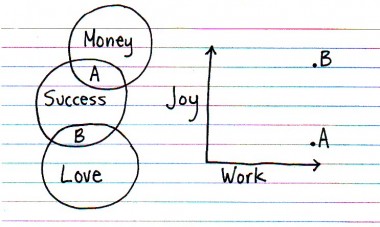
Let us be clear: Baking soda is not going to permanently cure your acne or turn back the cruel hand of time. But if you’re looking to detoxify your body and your household, this multitasking ingredient will make your life easier (and more beautiful) without denting your coffers. Mom may have taught you that baking soda will make your bread rise and your fridge smell better, but did you know of its many cosmetic applications?
Even the ancient Egyptians—and what beauty post would be complete without them?—used a compound similar to baking soda as soap. The stuff is antiseptic, antifungal, and lightly exfoliating. It will take the stains off your coffee mug and your not-so-pearly whites, and can be consumed internally to ease your tummy ache. And fridge odors aren’t the only smells it absorbs so don’t turn your nose up, and bring on the baking soda!

Brush Your Teeth With It Most conventional toothpastes use sodium lauryl sulfate as their primary ingredient. You may remember this verboten surfactant from previous posts explaining its harsh effects and possible contamination with a carcinogen called 1,4-dioxane. If you don’t want peroxide in your mouth, whitening strips are out too. Go natural instead with some bad-breath-killing-tooth-whitening baking soda on your brush (tastes like the ocean, salty but bearable), or add it to your SLS-free Tom’s for extra-whitening powers.

Wash Your Face With It As a rule, we think that harsh scrubs and exfoliants do not belong on your face—not least of all because you need that top layer of skin to keep bad stuff out and moisture in. Most exfoliating scrubs also contain other sketchy ingredients—like plastic balls. If you’re hellbent on scrubbring, though, at least switch to baking soda. It works great on elbows and feet too, and combined with some raw honey, this DIY face wash is refreshing and soothing—and anti-acne, too.

Create a DIY Deodorant This recipe from our book makes for a pretty effective homemade deodorant. Here’s what we suggest: Mix four tablespoons of baking soda with about ten drops of your favorite essential oil and apply to underarms. Guys, this sounds girly, but there are plenty masculine smells too—like Texas cedar wood. Ladies looking to reapply throughout the day can carry it in their purses: Just fill an empty mineral makeup container with it and use one of those stubby Kabuki brushes for no-mess application.

Spot-Treat Acne Our favorite natural acne remedy is clay, like this green tea one we swear by. But in a bind, making a little paste from baking soda and water and applying it to an unwelcomed visitor will help dry it out. We don't recommend this for deep cysts, but for more surface afflictions, it works like a charm.

Cleanse Your Hair If you’re looking to join the ranks of non-shampooers (we know a few), to reduce how often shampoo, or simply to get rid of some product build-up on your roots, look no further than baking soda. Just fill a glass with warm water and dissolve about a tablespoon of baking soda into it. Take that to the shower, and after wetting your hair pour the mixture through. Comb it well before rinsing—your hair will feel a little coated and slippery until it’s fully rinsed out.

Soothe Your Stomach Acid stomach, heartburn, gas, and other tummy issues are quickly relieved by baking soda because its slight alkalinity can neutralize the acid causing the problem. Just mix a teaspoon into a glass of warm water and drink it down. We swear by this trick.

Soak Your Skin That's right, dissolve some into your bath for a soothing and skin-softening experience. The added bonus? You won't need soap—and sometimes that's a good thing.
Know of any other cool uses for this magic powder?
This is a series inspired by No More Dirty Looks: The Truth About Your Beauty Products and the Ultimate Guide to Safe and Clean Cosmetics, a book by GOOD's features editor Siobhan O'Connor and her co-author Alexandra Spunt.
Read more on their blog
Illustrations by Brianna Harden
Posted via email from the Un-Official Southwestern PA Re-Entry Coalition Blog



